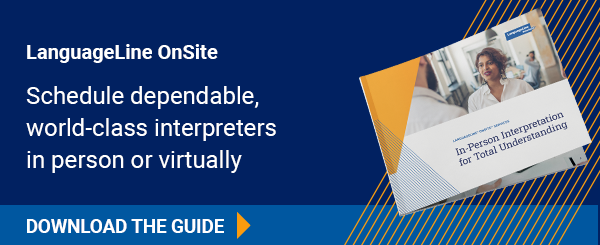
To use an onsite interpreter or not to use an onsite interpreter?
This is a frequent question in healthcare settings when tending to patients who are limited English proficient (LEP), deaf, or hard-of-hearing. The advent of over-the-phone interpreting (OPI) and video remote interpreting (VRI) has given healthcare providers multiple options when it comes to providing these patients with the language access to which they are entitled.
These providers are left wondering: Do we still need to work with onsite interpreters? The answer is an unequivocal “yes.”
In what instances are onsite interpreters still recommended? This question will be addressed in full during our upcoming webinar, “Onsite and Video Remote Interpreting: Choosing the Appropriate Modality,” which will take place Thursday, Nov. 16, at 2 p.m. ET.
During this webinar, you will learn from experts about the symbiotic relationship between onsite and video interpreting, when it’s essential to work with an onsite interpreter, and best practices for incorporating both modalities into your language access program.
Attendees will hear directly from Amy Cutman at Hershey Medical Center about their success partnering with both onsite and video interpreters to provide exceptional care while ensuring compliance with language access requirements.
Speakers include:
- Amy Cutman, BSN, RN, Manager of Care Coordination, Penn State Milton S. Hershey Medical Center
- Jim Pfeiffer, Regional Vice President, Onsite Interpreting Sales, LanguageLine Solutions
Please click here to register for our webinar, “Onsite and Video Remote Interpreting: Choosing the Appropriate Modality.”

